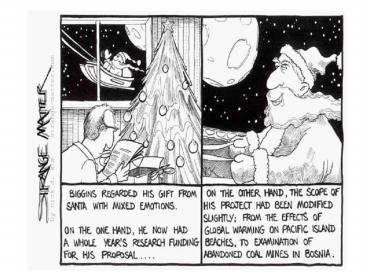Determining rate: Isolation Method PowerPoint PPT Presentation
1 / 32
Title: Determining rate: Isolation Method
1
(No Transcript)
2
Determining rate Isolation Method
- For multiple reactants the integrated rate
equation can get quite complex - Simplify things by having all reactants except
one, A, present in great excess so their
concentrations can be considered constant
(usually 10 100 x A) - A B ? products
3
- (i) Solve to find a
- (ii) ß can be obtained by varying b0 and plotting
log k versus log b0 - slope
- log k log k ß log b0
- intercept
4
(No Transcript)
5
Half-Life Method
- Recall, we define the half-life of a reaction to
be the time at which - a ½ a0
- ? Plug in a ½ a0 into the integrated rate
equations and solve for t
6
(No Transcript)
7
(No Transcript)
8
Half-Life Method
- Can use these expressions to determine reaction
order and rate coefficient - (i) Follow a reaction over several half-lives and
examine the dependence of the t½s on
concentration at the start of the t½ - (ii) Perform several different experiments with
different initial concentrations and determine
the first t½ for each.
9
(No Transcript)
10
(No Transcript)
11
(No Transcript)
12
Differential Method
- Look at the generalized rate law at t 0 (method
of initial rates) - By varying the values of a0 (holding b0 etc.
constant) and measuring the initial rates, we can
find a - Similarly, by varying b0 (holding a0 etc.
constant) ... one can find ß
13
Alternatively, for Take tangents to the
concentration vs. time plot at various points.
Plot log (tangents) vs. log a
14
Comparison of the Techniques
- (i) Isolation method means many reactions can be
studied under pseudo-first order conditions - with the integral method we do not need to know
the absolute concentration of A, but only
relative values. - half-life technique also doesnt require
absolute concentrations - 1st order reaction, t½ is independent of
concentration
15
Comparison of the Techniques
- (ii) Order of reaction can be determined in one
plot using the differential method but.... - rate constant is found by extrapolation to an
intercept, increasing the error in k - tangents by eye are subject to considerable
uncertainty.
16
Dependence on Temperature
- Rate constant ? Rate Coefficient
- The rate coefficient is found experimentally to
depend on temperature (sometimes very strongly) - activation energy
- k A exp (-EA / R T) (Arrhenius)
- pre-exponential factor
17
Dependence on Temperature
- Physical interpretation
- A - collision frequency factor
- - rate of collisions
- exp (-EA / R T) - fraction of collisions with
energy in excess of EA - - (Boltzmann factor)
- A exp (-EA / R T) is a measure of the rate of
successful collisions - Analysis of temperature dependence is via
- ln k ln A - EA / RT
18
(No Transcript)
19
(No Transcript)
20
Parallel and Consecutive Reactions
- Combinations of elementary reactions
21
Parallel Reactions
- reactants can be removed by two or more reactions
- overall rate of removal?
- fraction removed by each channel?
- e.g. Chlorine atoms generated by UV photolysis
of chlorofluorocarbons (CFCs) in the
stratosphere. Chlorine is then reactive.
22
Parallel Reactions
23
Consecutive Reactions
- A ? B ? C
- two consecutive first order reactions
- The concentration profiles will depend on the
relative rate constants for 1 and 2 - For k1 gtgt k2
- conversion of A into B before much C is formed.
- growth of C matches the decay of B (B ? C
rate-determining) - For k2 gtgt k1
- B is a very reactive intermediate and never
builds up to a large concentration (reacts
quickly to give C) - (Growth of C matches decay of A)
24
(No Transcript)
25
Explicit kinetic expressions are not always
straightforward !
26
Photochemical Kinetics
- Thermal reaction kinetics are initiated by
intermolecular collisions and defined by (simple)
rate laws but, - Many atmospheric processes are initiated by
photons. - How can we quantify their photochemical
kinetics?
27
Photochemical Kinetics
- Write the photochemical reaction just as a
normal reaction and substitute hn as one of the
reactants. - e.g. NO2 hn ? NO O
- Second order rate constant
28
Photochemical Kinetics
- Unfortunately, not so useful ....
- rate will vary dramatically with photon energy
- also easier to consider 2nd order processes in
pseudo-first order conditions - How to fix?
- take a constant flux of photons with a fixed
wavelength distribution
29
- Where
- J is a special photochemical rate constant which
includes - absorption coefficient of reactant,
- quantum yield of reaction and
- intensity of the solar spectrum under conditions
of interest.
30
Photochemical Kinetics
- It is relatively easy to estimate Js
- (i) need to know spectral characteristics of
absorption (lab experiments) - (ii) amount of incoming radiation
- (iii) estimate (fit) quantum yield for the
photoreaction (lab experiments)
31
Photochemical Kinetics
- e.g. mid-latitude mid-day values of JNO2 5 x
10-3 sec-1 - Recall also that
- Where k is the assumed 1st order rate constant
- So that t (200 sec)
32
(No Transcript)

